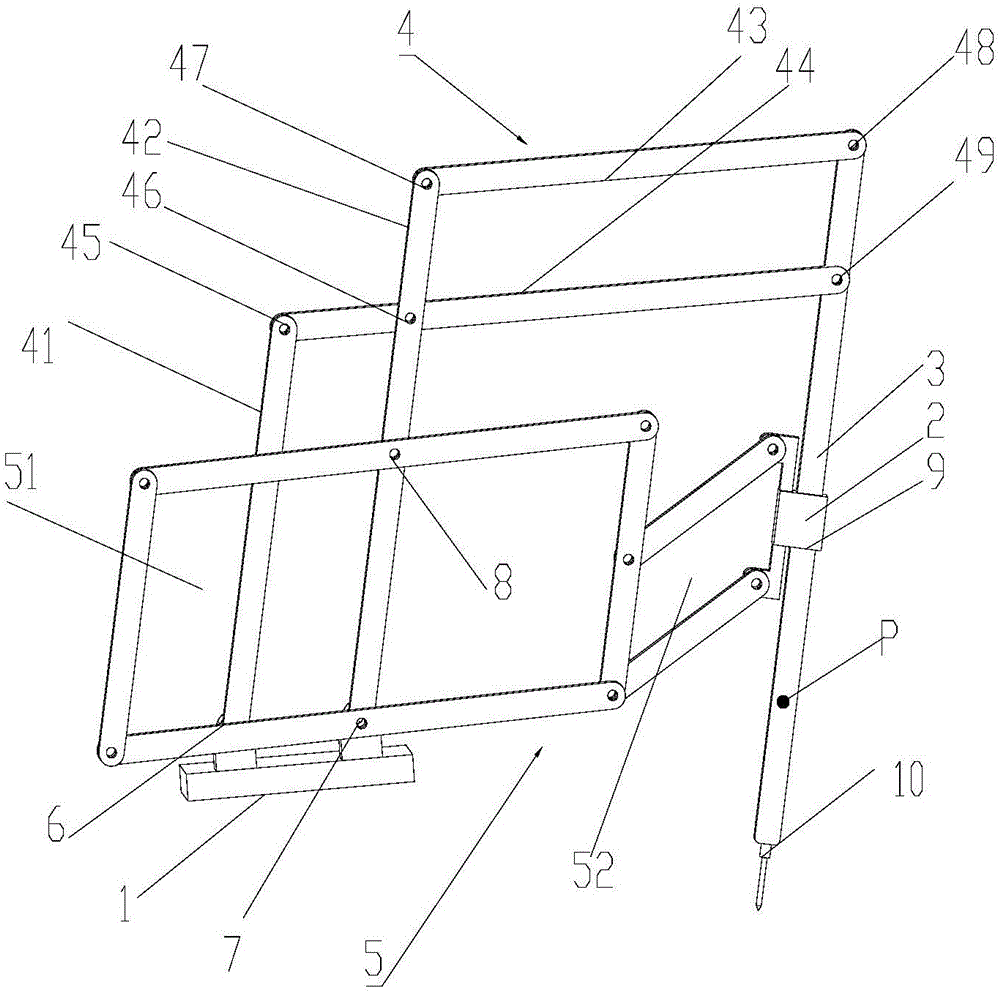End effecting mechanism for supporting endoscope in in-vitro minimally invasive surgery
An end-execution, minimally invasive surgery technology, applied in the field of medical robotics, can solve problems such as heavy weight of the end-effector, complex driving problems, complex kinematics, etc., to improve motion flexibility and accuracy, easy to control and implement, and reduce The effect of the moment of inertia
- Summary
- Abstract
- Description
- Claims
- Application Information
AI Technical Summary
Problems solved by technology
Method used
Image
Examples
Embodiment
[0037] An end effector for supporting an endoscope in extracorporeal minimally invasive surgery, the structure of which is as follows: figure 1 As shown, it includes frame 1, slider 2, guide rail 3, first kinematic branch chain 4, second kinematic branch chain 5, first rotating pair 6, second rotating pair 7, third rotating pair 8, first moving pair 9 and the fourth rotating pair 10; the slider 2 is movably connected with the guide rail 3 through the first moving pair 9, and the first motion branch chain 4 is arranged on the frame 1 through the first rotating pair 6 and the second rotating pair 7; One end is movably connected with the guide rail 3, one end of the second kinematic branch chain 5 is connected with the frame 1 through the second rotating pair 7, and the other end is connected with the slider 2; through the active movement of the first kinematic branch chain, the second kinematic branch chain The active movement of the endoscope and the rotation movement of the en...
PUM
 Login to View More
Login to View More Abstract
Description
Claims
Application Information
 Login to View More
Login to View More - R&D
- Intellectual Property
- Life Sciences
- Materials
- Tech Scout
- Unparalleled Data Quality
- Higher Quality Content
- 60% Fewer Hallucinations
Browse by: Latest US Patents, China's latest patents, Technical Efficacy Thesaurus, Application Domain, Technology Topic, Popular Technical Reports.
© 2025 PatSnap. All rights reserved.Legal|Privacy policy|Modern Slavery Act Transparency Statement|Sitemap|About US| Contact US: help@patsnap.com

